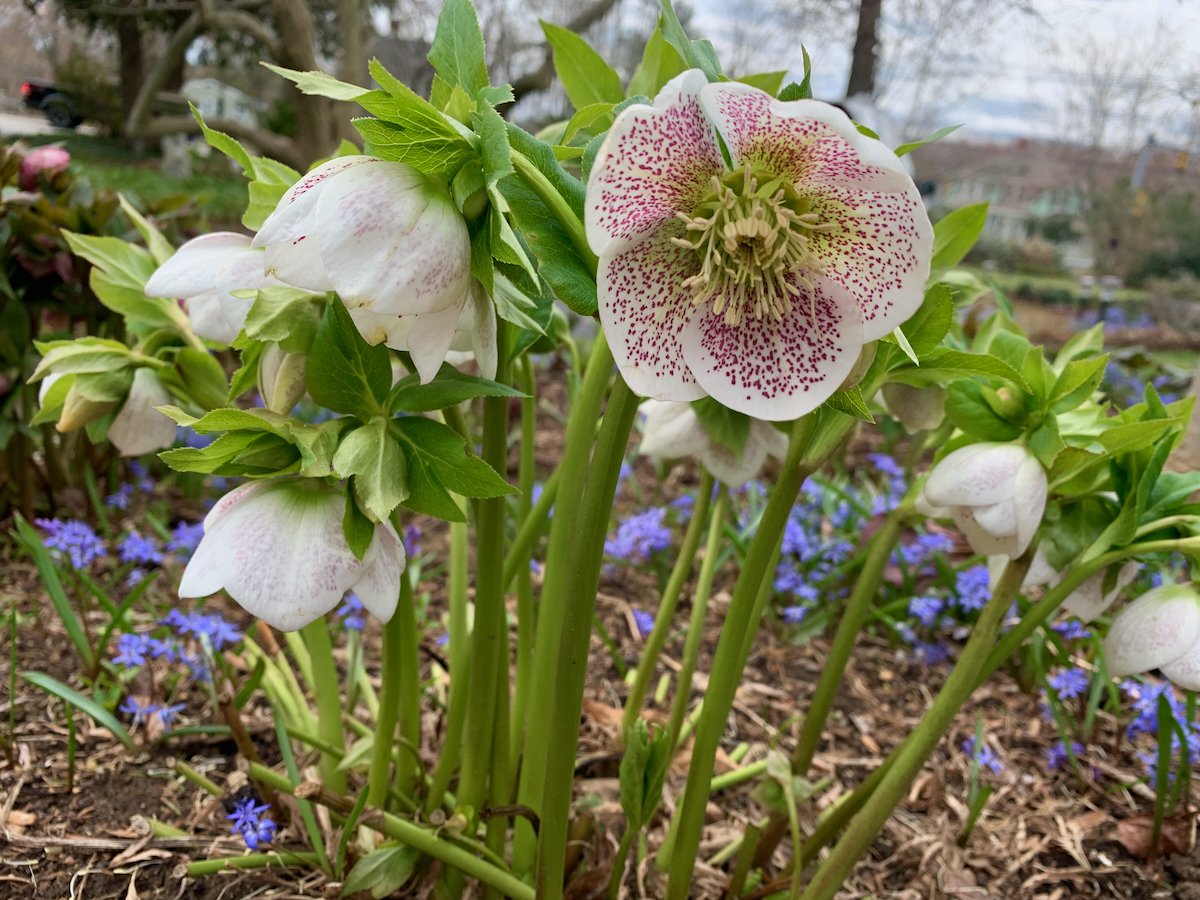Witch Hazel Cures Spring Fever
/At this time of year, when I am yearning for any sign of spring, I get the boost I need from the winter blooms of witch hazel. Their ribbon-like flowers in shades of yellows, oranges and reds fill the winter air with a clean, sweet scent that is most welcome to this winter-weary New Englander.
Witch hazel (Hamemelis) grows as a large shrub or a multi-trunked small tree, with deeply ribbed green summer foliage and an open shape that requires little pruning. Its unique flowers resemble shreds of crepe paper, with four dainty, twisted petals radiating out from the center. Individual petals are thin and can be up to three-quarter inch long; flowers are typically one-half to two inches in diameter and can last for several weeks. Witch hazel has an architectural branch structure and glorious fall foliage colors. But, its most outstanding attributes are its wonderful fragrance and its unusual bloom time: from mid-fall to late winter, a time when most plants in temperate gardens are in a state of dormancy.
Vernal witch hazel (H. vernalis) and autumn witch hazel (H. virginiana) are native to North America. Vernal witch hazel, hardy to Zone 3, is a spreading, suckering shrub that reaches heights of around ten feet. It flowers the earliest of all the winter-flowering types. Bloom time is in January-February/March, a time when little else is going on in the garden. Its fragrant flowers have red-tinged yellow petals that curl up on very cold days to avoid freeze damage; in this way, blossoms can last 3-4 weeks. Flowers are small, but plentiful. Fall leaf color is an outstanding yellow that can often persist for 2-3 weeks.
Autumn witch hazel, hardy to Zone 4, is a common understory tree/shrub in the eastern US. Witch hazel extract is made from the bark of its young stems and roots. It can reach heights of 30 feet with a spread of over 15 feet. (For smaller gardens, H.'Little Suzie' grows to a height of 5-6 feet.) Autumn witch hazel has large, yellow flowers with four crumpled and crimped petals. It blooms in late October-November, a time when most deciduous shrubs already have had their last hurrah. Its fall leaf color is a brilliant yellow and occurs concurrently with the yellow flowers to create a beacon of gold in the landscape. Its sweet scent spreads a great distance in the crisp autumn air.
The Asian species of witch hazel (H. japonica from Japan and H. mollis from China) have been crossed by hybridizers to create spectacular cultivars, termed H. x intermedia. All bloom in late winter/early spring, after the vernal witch hazel. These vase-shaped shrubs are hardy to Zone 5, grow 15-20 feet high, and have a wide range of flower color and autumn leaf color. H.'Arnold Promise' is a cultivar introduced by the Arnold Arboretum. It has large, fragrant yellow flowers, each petal nearly an inch long, and a bloom time that is among the latest of all witch hazels. H. 'Diane' is considered the reddest of the red-flowering types.
H.'Jelena' offers flowers with inch-long petals that are red at the base, orange in the middle and yellow at the tips. The overall effect from a distance is of glowing copper. Fall leaf color is rich orange-red. The number of H. x intermedia cultivars is staggering – your main problem will be in settling on which one to choose!
Witch hazel is easy to grow. It does well in most garden situations, but grows best in conditions that are similar to its native woodland habitat: slightly acidic organic soil that is well-drained but not overly dry, and morning sun or dappled sunshine. It will also do well in full sun in the northern reaches of its range. In the home garden, witch hazel can be planted as a specimen or as part of a shrub border. It should be sited to take advantage of its unique features: its brilliant autumn leaf color, which ranges from bright yellow to orange to red, its curled and crimped blossoms,which are stunning when backlit by the soft light of the winter sun, and its fragrance, which perfumes the cold air of a mid-fall or late winter day.
Numerous witch hazel cultivars are currently in bloom at Tower Hill Botanic Garden in Boylston, MA. You can purchase your own witch hazel at many local nurseries and through mail-order sources such as RareFind Nursery (www.rarefindnursery.com).
By Joan Butler
You Might Also Like












